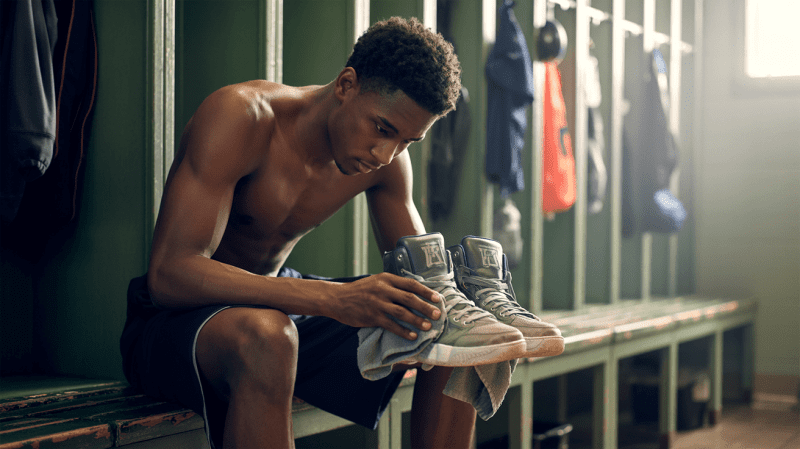Picking the right pickleball paddle material seriously changes your game. Graphite and composite paddles work well for players who want sharp control and quick reactions, while composite paddles feel better for those chasing more power and a softer touch.

Each material has perks that affect how you play, the paddle’s weight, and how long it lasts. If you get these differences, you’ll have a harder time picking a paddle that fits your needs and skill level.
Key Takeaways
- Paddle materials can change your control, power, and overall feel.
- Graphite paddles give you better control and a snappier response.
- Composite paddles offer more power and a cushioned hit.
Comparing Graphite and Composite Paddle Materials
Graphite and composite paddles look similar, but they’re built and play differently. These differences matter when you’re trying to match a paddle to your style.
Physical Properties and Composition
Graphite paddles have a core usually of polymer or Nomex wrapped in a thin layer of graphite fibers. The graphite surface feels stiff and smooth, which helps with control.
Composite paddles use layers of fiberglass or carbon fiber on a polymer core. The surface flexes a bit more than graphite, so the paddle feels different in your hand.
Graphite paddles come out lighter and surprisingly tough, so they last longer. Composite paddles weigh a bit more, but they’re often easier on the wallet. The material you choose changes not just the weight, but also the sound and feel when you hit the ball.
Performance Differences on the Court
Graphite paddles give you sharp control and a fast response. You can aim your shots more precisely because the surface doesn’t flex much.
Composite paddles, on the other hand, add more power to your swings. The slight flex in the face helps you smack the ball harder, which is great if you like to play aggressively.
Composite paddles also soak up some impact, so your hand doesn’t feel as much vibration. That’s a relief in longer games or if you’re sensitive to shock.
Weight and Balance Considerations
Graphite paddles usually weigh between 6.5 and 7.5 ounces. Their lighter weight allows you to snap your wrist for quick reactions.
Composite paddles tend to weigh 7.5 to 8.5 ounces. The extra heft adds power, but it can wear out your arm if you play long matches.
Balance is another thing to consider: graphite paddles often feel headlight, making them faster to swing. Composite paddles can be balanced toward the head or more evenly, which boosts power but might slow you down a bit.
How Paddle Material Impacts Your Playing Style

The paddle you pick changes how you hit, control, and spin the ball. It also matters how long your paddle holds up after regular play.
Control and Power Dynamics
Graphite paddles feel lighter and stiffer. You can whip them faster, which adds zip to your shots. If you love attacking and smashing, graphite just feels right.
Composite paddles bring more weight and a grippier surface. That helps with ball placement and control great if you’re into rallies or like to dink and nudge.
The way each paddle absorbs impact also changes the feel. Graphite feels rigid, so the ball jumps off. Composite’s softer touch can reduce power but give you more finesse.
Spin Generation
Spin is determined by surface texture and how it grabs the ball. Composite paddles usually have a rougher face, which grips the ball better and makes it easier to spin.
Graphite paddles tend to be smoother. You can still spin, but you need more wrist or arm action. Composite might be the way to go if you’re all about heavy spin. Graphite works, too, if you want power with a touch of spin.
Durability and Longevity
Thanks to their tough carbon fiber core, graphite paddles hold up well and resist warping. They shrug off hard hits and keep their shape.
Composite paddles use mixed materials, so sometimes they scuff or chip sooner. Still, some composites are impressively rugged. If you play a lot, graphite usually lasts longer. However, casual players might not notice much difference and could pick what feels better.
Choosing the Right Paddle Material for You

When picking a paddle, your experience level and what you want from your game. Each material brings something different to the table.
Skill Level and Experience
Newer players usually do well with composite paddles since they offer more control. The thicker core slows the ball, making returns easier and helping you build confidence.
More advanced players often lean toward graphite for speed and power. The lighter, stiffer surface lets you swing harder and faster, which can give you an edge if you know what you’re doing.
If you’re somewhere in the middle, try both types. See which one matches your style—do you want control or more punch?
Personal Preferences and Playing Needs
If you’re all about power, graphite paddles are the go-to. They react quickly and give you stronger shots, which helps if you like to attack. The lighter weight also means your arm won’t get tired as fast.
If you want consistency and control, composite paddles make sense. The softer surface absorbs some impact, so you can place shots more precisely. That’s perfect for defensive play or a slower pace.
Weight, grip, and shape matter, too. Some prefer heavier paddles for stability, others want something lighter for speed. Honestly, you’ll only know what feels good by trying a few out.
| Factor | Graphite | Composite |
|---|---|---|
| Weight | Lighter | Heavier |
| Power | High | Moderate |
| Control | Less | Better |
| Best For | Advanced, aggressive players | Beginners, defensive players |
Frequently Asked Questions
Graphite paddles respond faster and give you better control, while composite paddles pack a bit more punch. Graphite usually lasts longer, but it depends on how you use and care for your gear.
The right paddle material really does affect your experience, especially when you’re just starting out versus when you’re more advanced. Weight differences can also change your swing and comfort level.
Take care of your paddle and it’ll last, no matter what it’s made of. Prices usually reflect material quality and extra features.
What are the performance differences between graphite and composite pickleball paddles?
Graphite paddles react quickly and give sharper control. Composite paddles feel softer and deliver more power on contact.
Graphite works for speedy, precise play. Composite is better if you want extra power and a little forgiveness on off-center hits.
How does the material of a pickleball paddle affect its durability?
Graphite paddles usually last longer because the material resists dents and dings. Composite paddles can wear out faster, especially if the core or surface is softer.
How long your paddle lasts depends on how you use it and care for it, but graphite tends to hold up better.
Can the paddle material influence the game for beginners versus advanced players?
Beginners often like composite paddles for the power and a bigger sweet spot. Advanced players usually pick graphite for speed and control.
Material choice can make it easier to improve and play more consistently.
What are the weight variances between graphite and composite pickleball paddles?
Graphite paddles are lighter, 6.5 to 7.5 ounces, while composite paddles are heavier, around 7.5 to 8.5 ounces.
Lighter paddles are easier to swing fast. Heavier ones add power but might tire you out quicker.
How should I care for and maintain my graphite or composite pickleball paddle?
Keep your paddle dry and skip the extreme heat. Wipe off sweat and dirt after you play.
Store your paddle in a cool, dry spot and use a cover to keep the surface in good shape.
What is the cost comparison between graphite and composite pickleball paddles?
Graphite paddles usually cost more. That’s because the materials and performance perks drive up the price.
Composite paddles come at lower prices, though the cost depends on quality. Both types fit different budgets, so you’ve got choices.
Disclaimer:
The advice given on this website does not constitute or replace medical advice. Please consult with a doctor before starting any exercise or nutrition plan. Always Remember to Run Safe!


